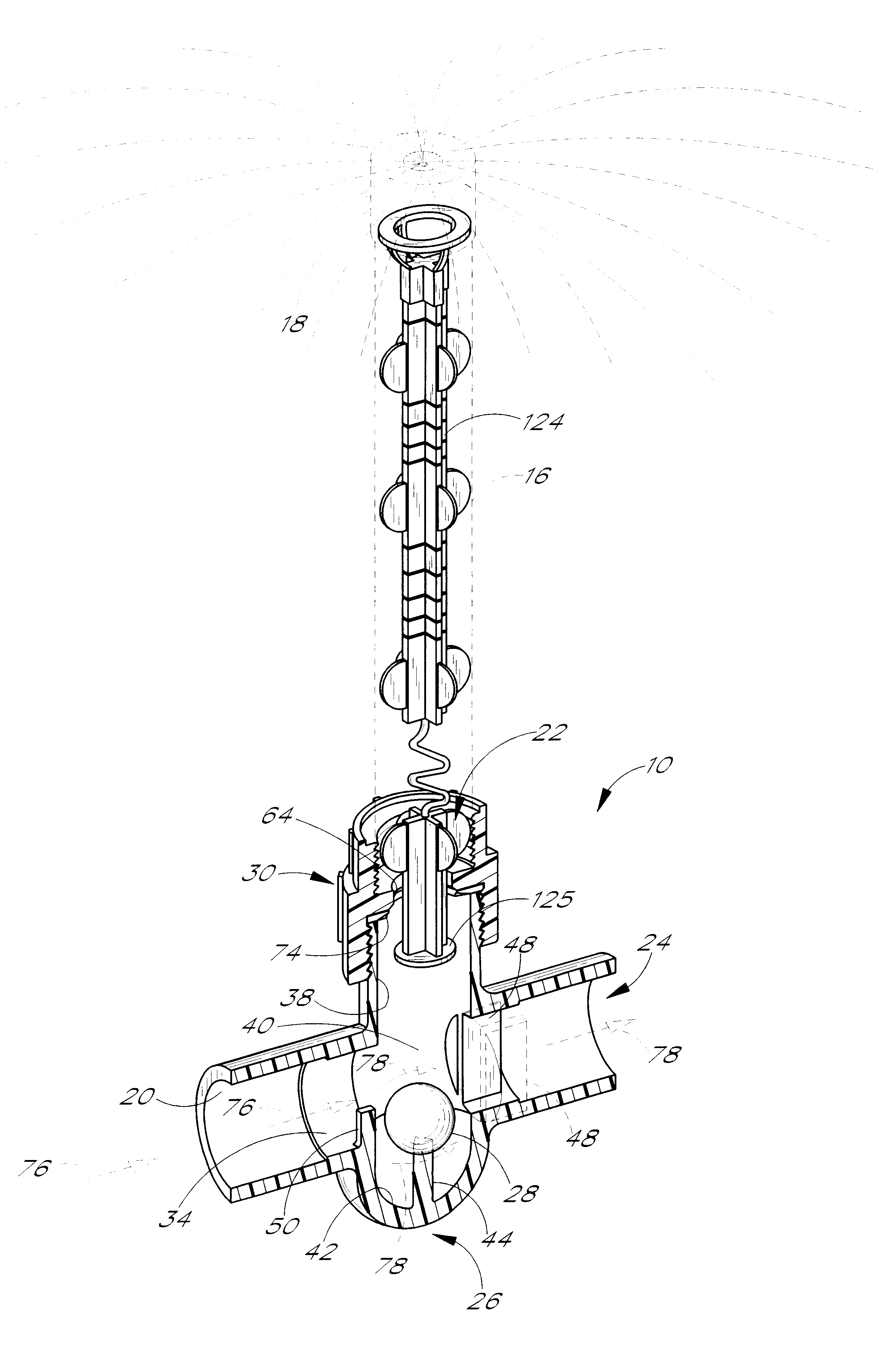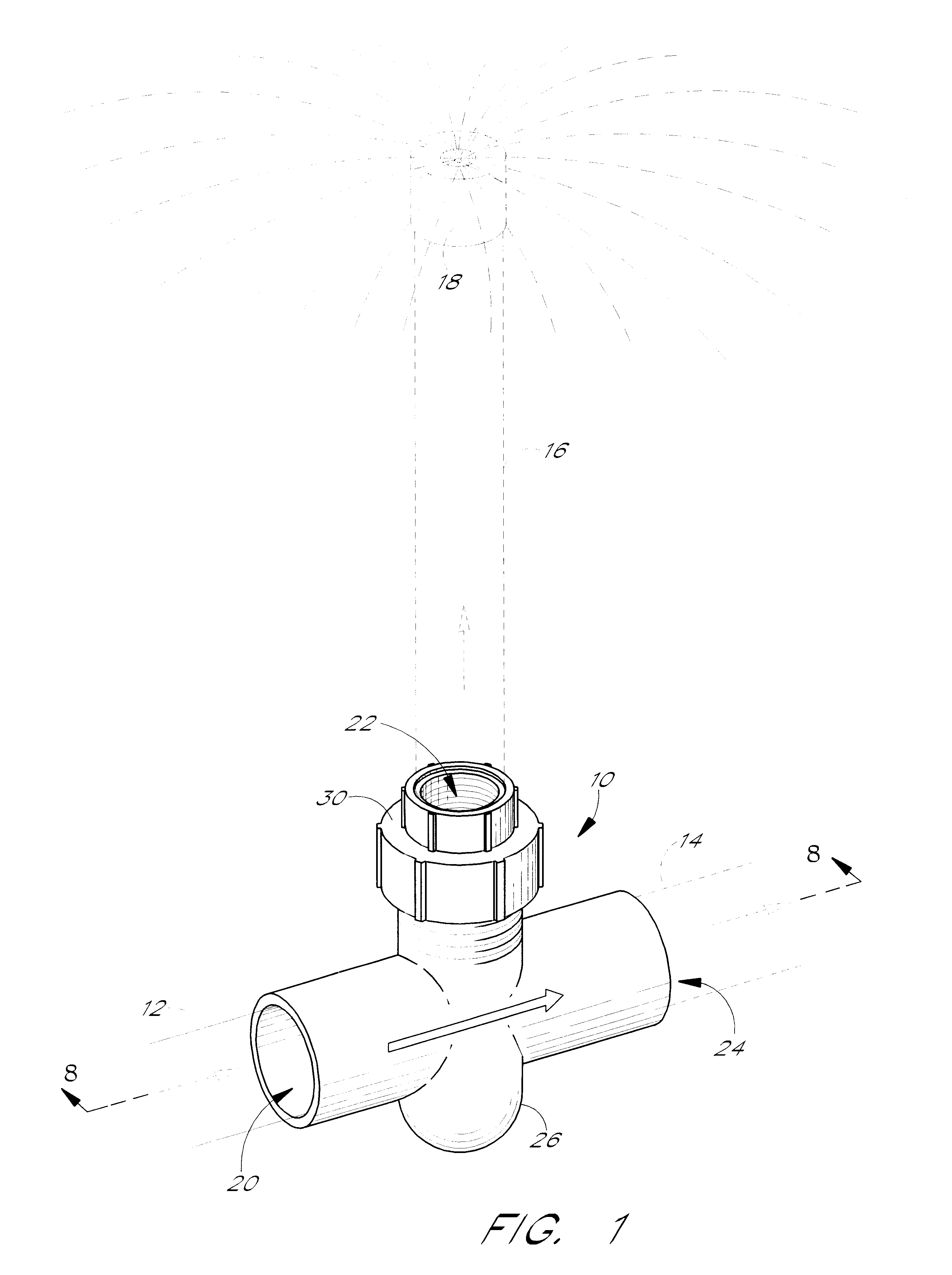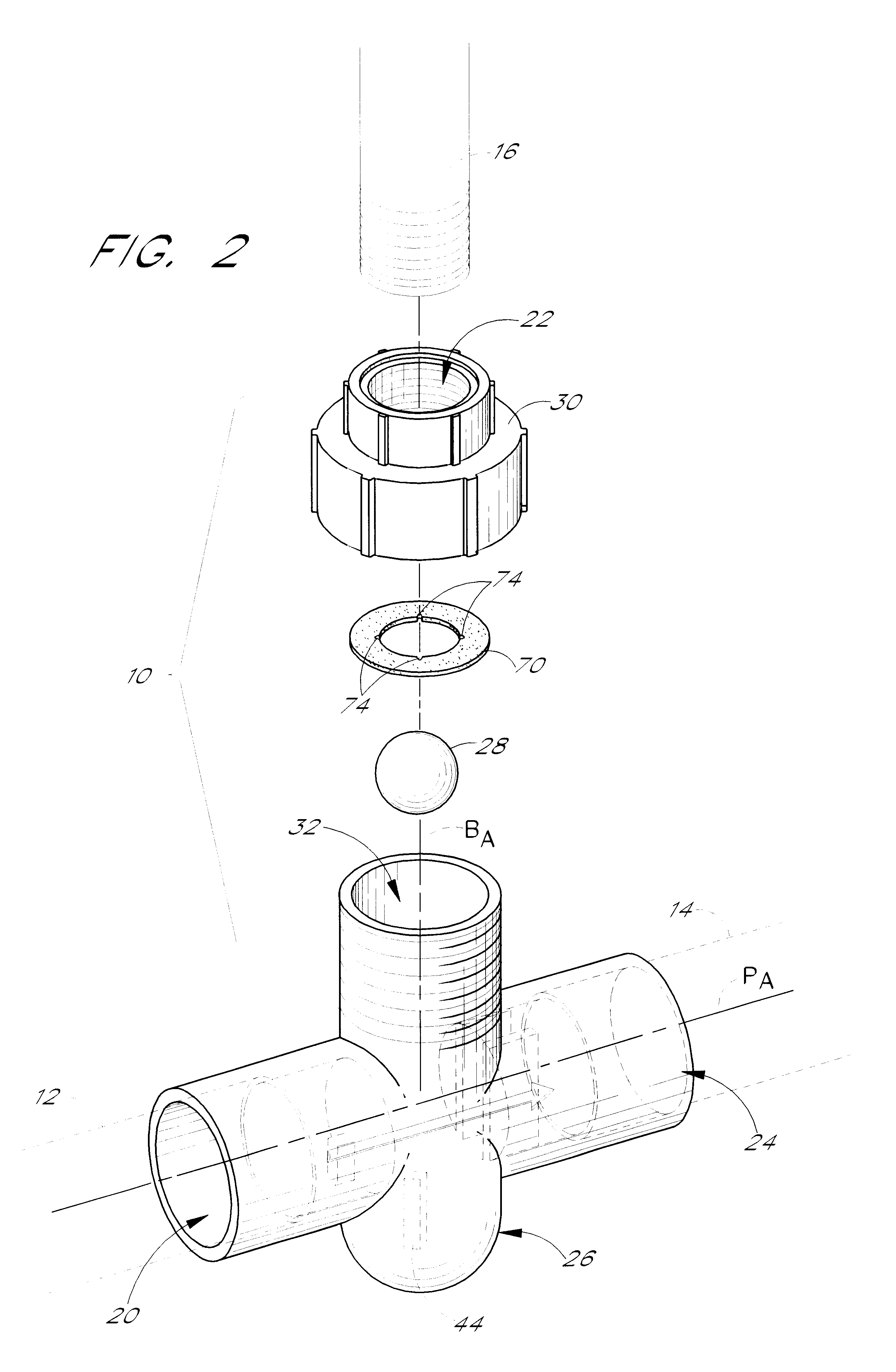Fluid flow control valve
a flow control valve and flow control technology, applied in the field of flow control systems, can solve the problems of easy breakage of plastic or metal risers, inability to properly distribute water through sprinkler heads, and easy mechanical damage of risers, etc., to facilitate identification, facilitate sizing, and facilitate sizing.
- Summary
- Abstract
- Description
- Claims
- Application Information
AI Technical Summary
Benefits of technology
Problems solved by technology
Method used
Image
Examples
Embodiment Construction
The present invention relates generally to fluid flow control valves for restricting fluid flow rates. Those skilled in the art will readily appreciate that the present invention may have application in a variety of fluid delivery systems where fluid flow through a particular branch of the system should be maintained below a predetermined flow rate or should be arrested if a mechanical failure occurs in a downstream section of the branch. While the following embodiments are described with reference to a riser fluid flow control valve in the context of irrigation systems, it will be understood that the structures, methods and principles described herein are readily applicable to the restriction of fluid flow in other contexts. The irrigation context, therefore, is merely an exemplary field of use.
FIGS. 1-10 illustrate a fluid control valve 10 configured in accordance with a preferred embodiment of the present invention. The valve 10 can be integrated into any of a variety of juncture...
PUM
 Login to View More
Login to View More Abstract
Description
Claims
Application Information
 Login to View More
Login to View More - R&D
- Intellectual Property
- Life Sciences
- Materials
- Tech Scout
- Unparalleled Data Quality
- Higher Quality Content
- 60% Fewer Hallucinations
Browse by: Latest US Patents, China's latest patents, Technical Efficacy Thesaurus, Application Domain, Technology Topic, Popular Technical Reports.
© 2025 PatSnap. All rights reserved.Legal|Privacy policy|Modern Slavery Act Transparency Statement|Sitemap|About US| Contact US: help@patsnap.com



